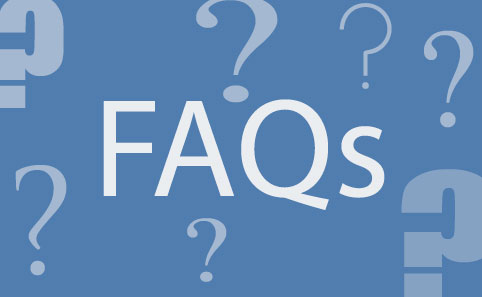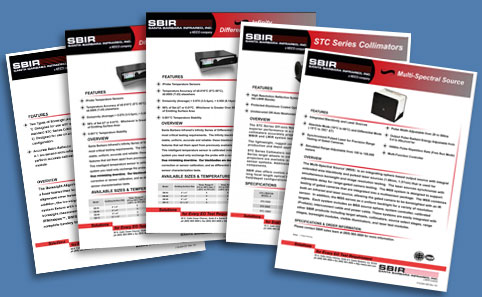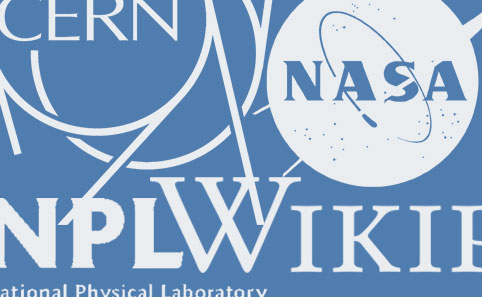Below is a list of general papers on infrared technology as well as articles on topics that SBIR has presented over the years at the annual SPIE Defense & Security Symposium. Please keep in mind that these papers were written at a specific point in time and are thus not a direct reflection of the current status of a program/product or test application. We have also included a helpful calculator section with many IR related formulas.
Calculators
Four-Bar Width Calculator
Four-Bar Target Calculator
Pinhole Target Diameter Calculator
IFOV Calculators
Method #1: Requires you to know the camera’s FOV and total pixel length ( in x or y direction).
Method #2: Requires you to know the detector’s individual element size (microns) and the camera’s focal length (millimeters)
Universal Unit Converter for Conversions
This applet allows users to simulate standard optic elements (lens, mirror, dielectrics, sources, apertures) and observe the ways that light rays propagate through these elements. The applet is designed to be scripted but may also be used to construct optical systems using buttons and a click and drag metaphor.
Education on IR Technology
IR for Dummies (PDF)
A brief non-technical introduction to infrared radiation, IR imaging systems, testing and evaluation of IR imaging systems, and IR test equipment.
Test System Components (PDF)
Introductory descriptions of the instrument and accessories used to test detectors, focal planes, and infrared imaging systems.
Radiometric Temperature: Concepts and Solutions (PDF)
JCD Publishing
JCD Publishing offers books, software, and consultation for the imaging system professional working with infrared or CCD imaging systems.
SPIE Standard Products Publications
A Spectro-Radiometric Calibration Station for Blackbody Sources 2023 (PDF)
In this paper, SBIR details a new test capability to provide spectro-radiometric calibration over the wavelength range of 3-14um, covering the bands of interest for most thermal imaging sensors.
Performance Prediction from EO System Measurements Using IRWindows and NV-IPM 2018 (PDF)
In this paper, SBIR details how IRWindows performs the required measurements for targeting task performance (TTP) evaluation and generates a measured system component for use in NVIPM to predict range performance of an IR imaging system.
Design and Development of the CubeSat Infrared Atmospheric Sounder 2017 ( PDF)
This paper provides an overview of the design and acquisition approach and provides a status of the current development.
Advanced E-O Test Capability for U.S. Army Next-Generation Automatic Test Systems 2015 (PDF)
The Future E-O (FEO) program was established to develop a flexible, modular, automated test capability as part of the Next Generation Automatic Test System (NGATS) program to support the test and diagnostic needs of currently fielded U.S. Army E-O devices. SBIR has designed, fabricated and delivered three prototype FEO units for engineering and logistics evaluation prior to anticipated full-scale production beginning in 2016.
An Alternate Method for Performing MRTD Measurements 2014 (PDF)
The traditional test methodology to perform MRTD is very time intensive, requiring data collection at multiple temperatures and target frequencies. This paper will present an alternate methodology using a controlled blackbody temperature ramp rate.
An Extended Area Blackbody for Radiometric Calibration 2013 (PDF)
SBIR discusses an enhanced blackbody coating that offers higher emissivity than the standard coating used. The paper discusses comparative measurements between the standard and improved coatings.
Rapid Electro-Optical (EO) TPS Development In A Military Environment 2012 (PDF)
This paper provides a discussion on the numerous advantages of utilizing IRWindows as an Electro-Optical test development and execution environment for TPS development over ATLAS.
Calibration of a High Dynamic Range Low Light Level Visible Source 2011 (PDF)
This paper provides a discussion on a method to calibrate image intensified (I-squared) devices over a large dynamic range while considering output compensation methods.
Non-Optically Combined Multi-Spectral Source for IR, Visible and Laser Testing 2010 (PDF)
This paper provides a discussion on a multi-spectral source provided by SBIR, including performance data relating to EO testing with output in pertinent spectral bands, stability and resolution.
Comparison of Fourier Transform Methods for Calculating MTF 2008 (PDF)
This paper provides a comparison of varying methods to calculate MTF testing.
Radiometric Calibration and Operation of IR Target Projectors 2006 (PDF)
This paper provides a procedure for radiometric calibration of infrared target projectors using the RAD-9000 MWIR/LWIR spectral radiometer.
Bolometers Running Backward: The Synergy Between Uncooled IR Sensors and Dynamic IR Scene Projection 2006 (PDF)
This paper presents a lighthearted overview of the technical evolution of IRSP from its early microbolometer roots, discusses current and emerging IRSP capabilities, illustrates the device-level to system-level synergy between sensors and projectors, and offers a peek into the advanced EO simulation capabilities and technologies which will be required to address emerging FPA and sensor trends.
Advanced Man-Portable Test Systems 2005 (PDF)
Discussion of SBIR’s latest developments in instrumentation for military laser range finder/designator test and evaluation.
Advanced Test Systems for Production Testing of Cameras with Day/Night and Visible/NIR Capabilities 2005 (PDF)
Discussion of SBIR’s new variable contrast test system for evaluating camera day/night mode performance.
RAD9000: A High-Performance Spectral Radiometer 2005 (PDF)
Provides an update on the RAD9000 MWIR/LWIR spectral radiometer- a high performance instrument supporting extremely accurate absolute and relative radiometric calibration of EO test systems.
Advanced Target Projector Technologies 2005 (PDF)
Discussion of SBIR’s recent developments in the area of target projection technologies for measurement of staring IR sensor image quality.
Reflective/Emissive Target Comparison 2003 (PDF)
Discussion of SBIR’s in-house target projector system, and review of preliminary results showing advantages of reflective vs. emissive targets.
High Temperature Emitter Physics 2003 (PDF)
Introduction of long-term technical approaches for achieving >2000 K apparent temperature using resistive emitter-based IR scene projection.
Laser Testing 2003 (PDF)
Introduction of SBIR’s new family of test modules supporting characterization of UUT laser range finders, designators, and spot trackers.
High-End Infrared Imaging Sensor Evaluation System 2002 (PDF)
Discussion of IR Testing Using IRWindows™2001 (PDF)
A Turnkey Test System for IR Imaging
(from Photonics Tech Brief, May 1999)
High-Performance FLIR Testing Using Reflective-Target Technology 1999 (PDF)
MIRAGE Dynamic IR Scene Projector Publications
Development of a High-Definition IR LED Scene Projector 2016 (PDF)
To meet the demands of future IRFPA testing, Santa Barbara Infrared Inc. is developing an Infrared Light Emitting Diode IRSP system. Design goals of the system include a peak radiance >2.0W/cm2/sr within the 3.0-5.0µm waveband, maximum frame rates >240Hz, and >4million pixels within a form factor supported by pixel pitches ≤32µm. This paper provides an overview of our current phase of development, system design considerations, and future development work.
Achieving Ultra-High Temperatures with a Resistive Emitter Array 2016 (PDF)
Under the Ultra High Temperature (UHT) development program, Santa Barbara Infrared Inc. (SBIR) is developing a new infrared scene projector architecture capable of producing both very large format (>1024×1024) resistive emitter arrays and improved emitter pixel technology capable of simulating very high apparent temperatures.
Thermal Resolution Specification in Infrared Scene Projectors 2015 (PDF)
Infrared scene projectors (IRSPs) are a key part of performing dynamic testing of infrared (IR) imaging systems. Two important properties of an IRSP system are apparent temperature and thermal resolution. Infrared scene projector technology continues to progress, with several systems capable of producing high apparent temperatures currently available or under development. In this paper, we discuss some of the various factors that affect thermal resolution of a scene projector system, and propose some specification guidelines regarding thermal resolution to help better define the real needs of an IR scene projector system.
Development of an Ultra-High Temperature Infrared Scene Projector at SBIR 2015 (PDF)
The rapid development of very-large format IR detector arrays has challenged the IR scene projector community to develop correspondingly larger-format IR emitter arrays to support the testing needs of systems incorporating these detectors. Under the Ultra High Temperature (UHT) program, SBIR is developing a new IR scene projector capable of producing both very large format (>1024×1024) and improved pixel technology capable of simulating very high apparent temperatures in excess of 1000K.
Advances in Iterative Non-Uniformity Corection Techniques for Infrared Scene Projectors 2015 (PDF)
SBIR is continually developing improved methods for non-uniformity (NUC) of its IR Scene Projectors as part of its comprehensive effort to achieve the best possible projector performance.
Ultra High Temperature Emitter Pixel Development for Scene Projectors 2014 (PDF)
To meet the needs of high fidelity infrared sensors, under the UHT development program, Santa Barbara Infrared Inc. has developed new infrared emitter materials capable of achieving extremely high temperatures.
Scalable Emitter Array Development for Infrared Scene Projector Systems 2014 (PDF)
Several new technologies have been developed over recent years that make a fundamental change in the scene projection for infrared hardware in the loop test. Array sizes of 2048×2048 and larger are required to meet the high fidelity test needs of today’s modern infrared sensors.
A 2-Color 1024×1024 Dynamic Infrared Scene Projection System 2013 (PDF)
This paper discusses the design and testing of a 2-color dynamic scene projector based on our MIRAGE-XL product line. Algorithms derived for 2-color operation are discussed and system performance data is presented, including radiometric performance, sub-pixel spatial co-registration and compensation for spectral cross-talk.
A Hybrid Approach to Non-Uniformity Correction of Large Format Emitter Arrays 2012 (PDF)
This paper discusses a hybrid method to performing a non-uniformity correction on an infrared scene simulator using both a flood measurement and a sparse grid method.
Design Considerations for a High-Temperature, High-Dynamic Range IRSP 2012 (PDF)
This paper reports the results of some initial investigations into the resolution that is required for acceptalbe system performance and the effects of moving to a higher dynamic range may put on existing NUC procedures of a high dynamic range infrared scene projector.
Radical Rise Time Enhancement of a Resistive IRSP Array 2012 (PDF)
This paper expands on a study previously conducted by SBIR to determine the maximum capability of a technique in which the pixel drive of the first frame of a commanded transition is modified to improve transition time in order to support up to 400 hertz frame rates.
Ultra High Temperature Infrared Scene Projector System Development 2012 (PDF)
This paper discusses the current status of the pixel design of the UHT development program and will discus with an emphasis on the models developed to facilitate these designs and estimate performance prior to fabrication.
Enhanced LWIR NUC Using an Uncooled Microbolometer Camera 2011 (PDF)
This paper discusses an alternative approach to utilizing either a cooled MWIR or LWIR camera with a microbolometer camera to perform LWIR Non-Uniformity Correction on an Infrared Scene Projector.
LWIR NUC Using an Uncooled Microbolometer Camera 2010 (PDF)
An overview of the continuing development by SBIR to use a microbolometer camera to perform LWIR NUC on an Infrared Scene Projector (IRSP).
Rise-Time Enhancement Techniques for Resistive Array Infrared Scene Projectors 2009 (PDF)
An overview of SBIR’s new rise-time technique termed “overdrive” used for improving the rise-time of emitter pixels.
Performance Improvements in Large Format Resistive Array (LFRA) InfraRed Scene Projectors 2008 (PDF)
This paper will discuss the advances in pixel design, rise time enhancement techniques and also the process by which arrays are annealed.
LFRA: Developments in Large-Format Resistive Arrays & Advanced IRSP System Technologies 2007(PDF)
An overview of SBIR’s recently completed LFRA product line: commercially known as the MIRAGE XL. The Mirage XL system includes a 1024×1024 IR emitter array. A brief discussion of WFRA which includes an even larger 1536×768 emitter array.
LFRA: Developments in Large-Format Resistive Arrays & Advanced IRSP System Technologies 2006(PDF)
An overview of SBIR’s recently completed LFRA product line: commercially known as the MIRAGE XL. The Mirage XL system includes a 1024×1024 IR emitter array.
OASYS:Cryogenically-Optimized Resistive Arrays & IRSP Subsystems for Space-Background IR Simulation 2006 (PDF)
An OASYS technical system status overview.
MIRAGE: Developments in IRSP Systems 2005 (PDF)
This paper describes the growth and expansion of the MIRAGE family.
MIRAGE Update 2003 (PDF)
Overview of SBIR’s new emitter foundry, next-generation 512 x 512 development, updated Calibration Radiometry System (CRS) and NUC implementation.
LFRA 2003 (PDF)
Large Format (1024 x 1024) MIRAGE system development status, including RIIC probe test data and next-generation C&CE components.
LFRA 2002 (PDF)
SBIR is producing a 1,024×1,024 Large Format Resistive Array (LFRA) and supporting IR projector system.
MIRAGE Emitter Improvements & Technology Review 2001 (PDF)
SBIR has attained highly stable emitters with MWIR apparent temperatures of 700k.
MIRAGE System Overview and Status 2001 (PDF)
A MIRAGE technical system overview.
MIRAGE Calibration Radiometry System 2000 (PDF)
SBIR’s high speed correction algorithm improves the uniformity of the final infrared image.
MIRAGE Large-format emitter arrays 1024×1024 and 1024×2048 2000 (PDF)
A description of the technical approach and plan to develop a new generation of Large Area Infrared Scene Emitters(LAISE).
MIRAGE System Overview and Status 2000 (PDF)
A MIRAGE technical system overview.
MIRAGE Dynamic IR Scene Projector Overview and Status 1999 (PDF)
A MIRAGE technical system overview.
MIRAGE – Innovations in Infrared Scene Simulator Design 1999 (PDF)
A description of the MIRAGE system, and how it addresses the problems of dynamic scene projection.
MIRAGE read-in-integrated-circuit 1999 (PDF)
This paper describes the test results for the MIRAGE read-in-integrated-circuit (RIIC) designed by Indigo Systems Corporation
MIRAGE FAQs 1999 (PDF)
Frequently asked questions about the MIRAGE infrared scene projector.


